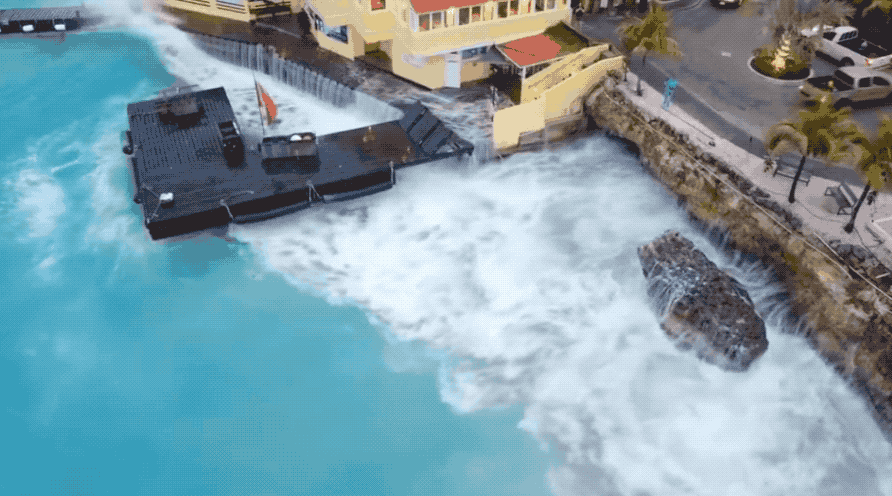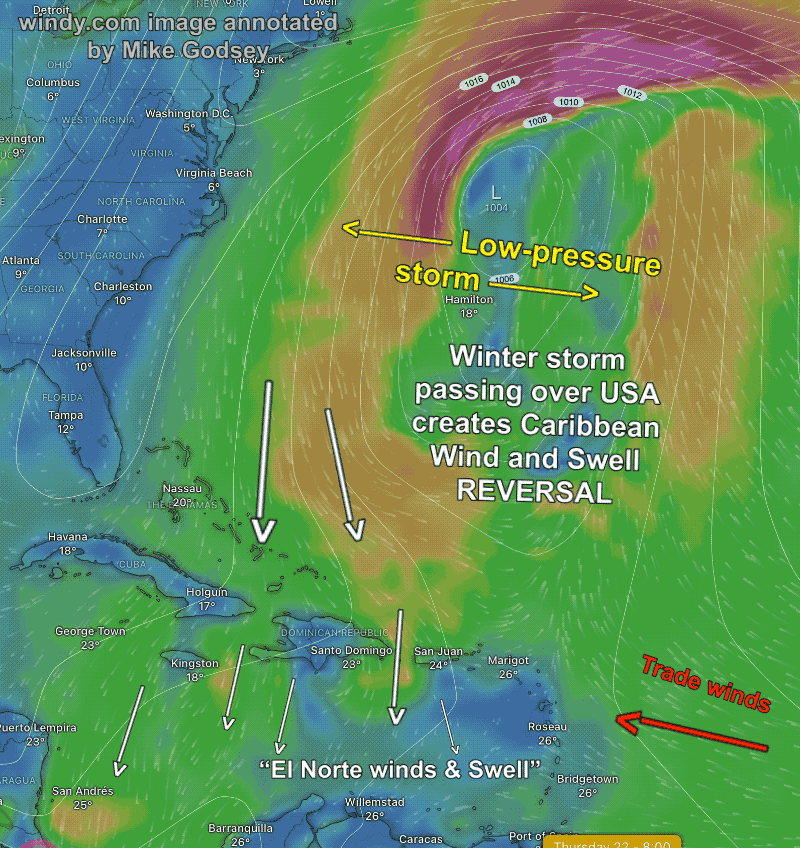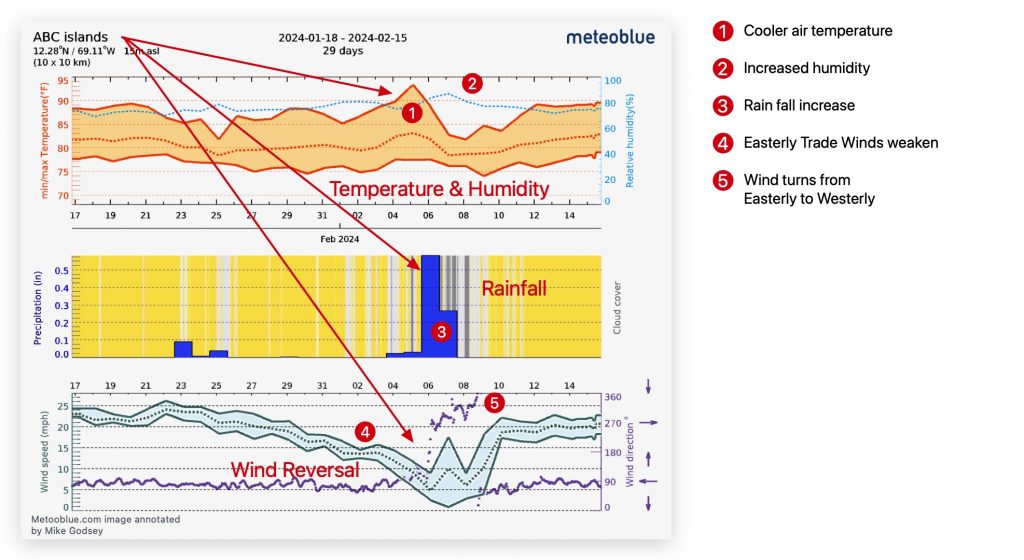Notifications
ALL BUSINESS
COMIDA
DIRECTORIES
ENTERTAINMENT
FINER THINGS
HEALTH
MARKETPLACE
MEMBER's ONLY
MONEY MATTER$
MOTIVATIONAL
NEWS & WEATHER
TECHNOLOGIA
TV NETWORKS
VIDEOS
VOTE USA 2026/2028
INVESTOR RELATIONS
COMING 2026 / 2027
ALL BUSINESS
COMIDA
DIRECTORIES
ENTERTAINMENT
FINER THINGS
HEALTH
MARKETPLACE
MEMBER's ONLY
MONEY MATTER$
MOTIVATIONAL
NEWS & WEATHER
TECHNOLOGIA
TV NETWORKS
VIDEOS
VOTE USA 2026/2028
INVESTOR RELATIONS
COMING 2026 / 2027
About Me
 Latinos Media
Latinos Media Latinos Media provides all types of news feeds on a daily basis to our Members
Posted by - Latinos Media -
on - February 23, 2024 -
Filed in - Weather -
-
883 Views - 0 Comments - 0 Likes - 0 Reviews

Mike Godsey
 Wind Reversal, Buddy Divers on Bonaire: Link to original Facebook posting on the Bonaire for Divers group to see full video:
Wind Reversal, Buddy Divers on Bonaire: Link to original Facebook posting on the Bonaire for Divers group to see full video:
“A mighty tremor roused us from sleep at 3 pm in the SandDollar Condos. The ground vibrated beneath us, as colossal waves crashed against the shore. It was unmistakable – the reversal had finally come. Feb. 5, 2024”
For starters I should mention that mild “Wind Reversals” can be a blessing since, as the Trade Winds die
there is easier access to the incredible diving on the normally rough eastward side of the islands and sites towards the North and South end of Bonaire.
And if you are an expert Kite Boarder the surfing can be amazing after the reversal as the offshore Trade Winds make for glassy steep faces on the residual swell towards the south end of Bonaire..
On most Caribbean islands wind reversals are common than the since they are in the main hurricane track and coral distribution and building locations reflect this reality.
Since the ABC island, ABC islands, Aruba, Curaçao and Bonaire, are out of the main hurricane track both coral and buildings are more vulnerable to swell created by wind reversals.
On the ABC islands some types of wind reversals can cause significant swell damage to the islands and make diving impossible on the normal placid western side of the islands.
Such a weather event started Feburary 5, 2024 leading to a to a damaging “Wind/Swell Reversal” on the ABC islands of Bonaire and Curaçao.
During a strong Wind Reversal the typical easterly Trade Winds weaken and northerly to westerly winds and swell hit the western side of the islands.
In this event most of the strong wind was far to the north but the large swell continued towards Bonaire and Curaçao.
A wind and swell reversal is destructive for several reasons:
This second graphic shows a very minor wind reversal modeled to occur in late February, 2024.
irst note how the regular easterly Trade Winds fade away before they reach the Lesser Antilles. This event started Feb. 21 and continues today Feb. 22. Hopefully you are taking advantage of the mild wind and swell conditions.
Note how northerly winds (sometimes called “El Norte” winds) funnel and accelerate between the islands to the north and create northerly swell.
So what causes these wind reversals?
The most common culprits for wind reversals are 1. Mid-Latitude storms, 2. Local squalls and 3. tropical hurricanes. This blog will focus on d-Latitude storms.
Mid-latitude Storms: Sometimes, N to W winds from higher latitudes storms crossing the USA into the Atlantic can push south and extend into the Caribbean funneling between islands and creating strong swell even if only mild winds reach the Bonaire area. These fronts can bring strong winds that temporarily replace the trade winds. This is less common than tropical cyclones but can still occur, especially during the winter months.
 First, note the low-pressure storm system that had just passed over the eastern seaboard of the USA. Notice how northerly winds are blowing from Near Washington D. C., USA past Cuba and across the Caribbean to near Bonaire to Curaçao. This long fetched generated large swell especially in the wind venturi area islands to the north. It was this large swell that did the most damage to the near shore coral reefs.
First, note the low-pressure storm system that had just passed over the eastern seaboard of the USA. Notice how northerly winds are blowing from Near Washington D. C., USA past Cuba and across the Caribbean to near Bonaire to Curaçao. This long fetched generated large swell especially in the wind venturi area islands to the north. It was this large swell that did the most damage to the near shore coral reefs.
This type of event happened at Bonaire and Curaçao starting February 5. 2024.
During the wind reversal heavy seas from the distant wind pounded the shoreline of Curaçao and Bonaire prompting the Meteorological Service to issue a yellow warning for the exposed beaches of the islands.
STINAPA (National Parks Foundation) also issued a warnings on Bonaire for boat owners and divers. The day before the swell hit many dive boats, especially at Buddie Divers, left their normal moorings on the west side of the island near Kranldyike and sought refuge in the Marina.
 This graphic shows how the temperature dropped, the humidity increased, while the winds direction turned northerly winds and weakened during the reversal.
This graphic shows how the temperature dropped, the humidity increased, while the winds direction turned northerly winds and weakened during the reversal.
During a major wind reversal large swell batters the western shoreline and rainy conditions are common.
In the aftermath of the reversal there are unusual number of jellyfish and Portuguese Man o’ War swept towards the islands from the mid Caribbean.
After a reversal it is common to see broken elkhorn coral (Acropora cervicornis) and staghorn coral (Acropora cervicornis) near shore like you saw at the beginning of this blog. Less visible is the damage done to coral polyps to shallow water reefs. Stirred-up sediment settles on depot corals, hindering the light needed by their colorful symbiotic algae and and oxygen intake. All this further jeopardizes their health even as they are being stressed by warming ocean waters and Stony Coral Tissue Loss Disease (SCTLD)
Bookmark this link to see past and future Caribbean Wind and Reef Blogs
The post Caribbean Wind & Reef Blog, Part 3: “Wind reversal” damage on Bonaire and Curaçao. appeared first on Blog.WeatherFlow.com.